Abstract
OBJECTIVES: This study examined the reach, effectiveness, and cost-effectiveness of a mass media-led smoking cessation campaign including television shows, a television clinic, a quit line, local group programs, and a comprehensive publicity campaign. METHODS: A random sample of baseline smokers (n = 1338) was interviewed before and after the campaign and at a 10-month follow-up. A nonpretested control group (n = 508) of baseline smokers was incorporated to control for test effects. RESULTS: Most smokers were aware of the campaign, although active participation rates were low. Dose-response relations between exposure and quitting were found. The follow-up point prevalence abstinence rate attributable to the campaign was estimated to be 4.5% after control for test effects and secular trends. The cost per long-term quitter was about $12. CONCLUSIONS: In spite of a massive rise in tobacco promotion expenditures prior to the campaign and the absence of governmental control over the media, the campaign under study may have increased normal cessation rates substantially.
Full text
PDF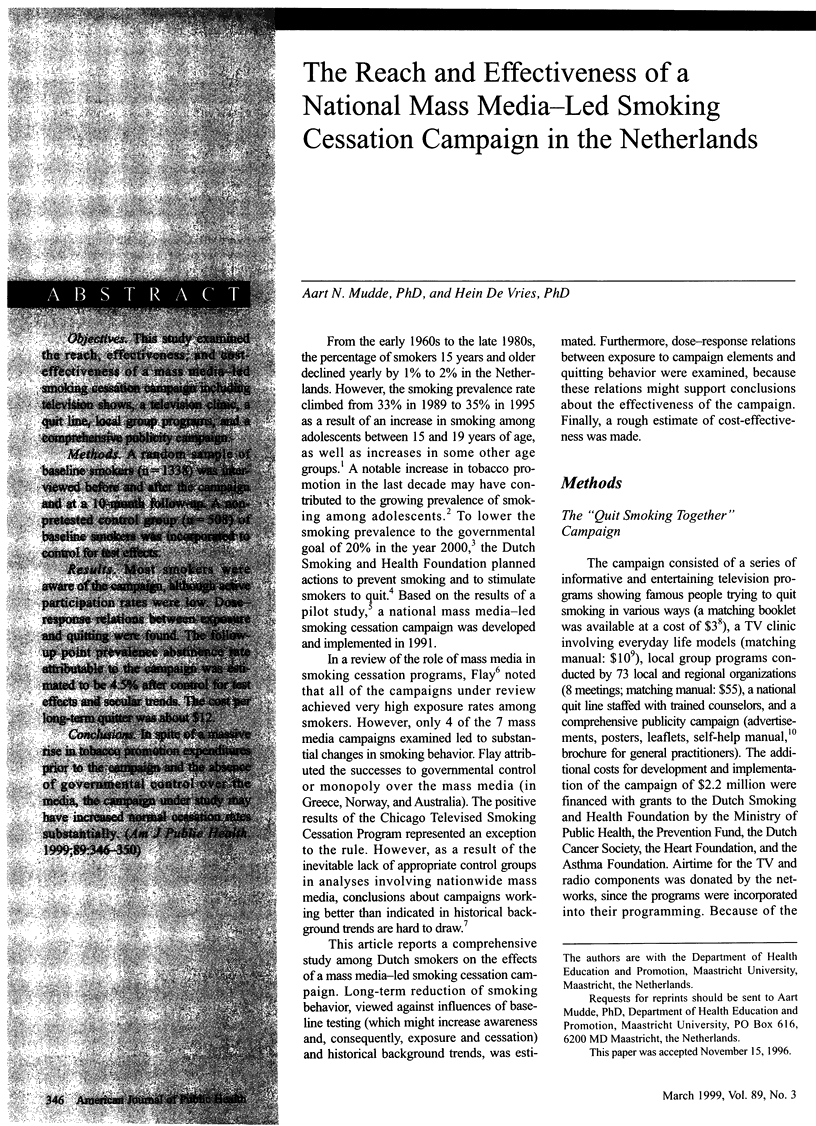
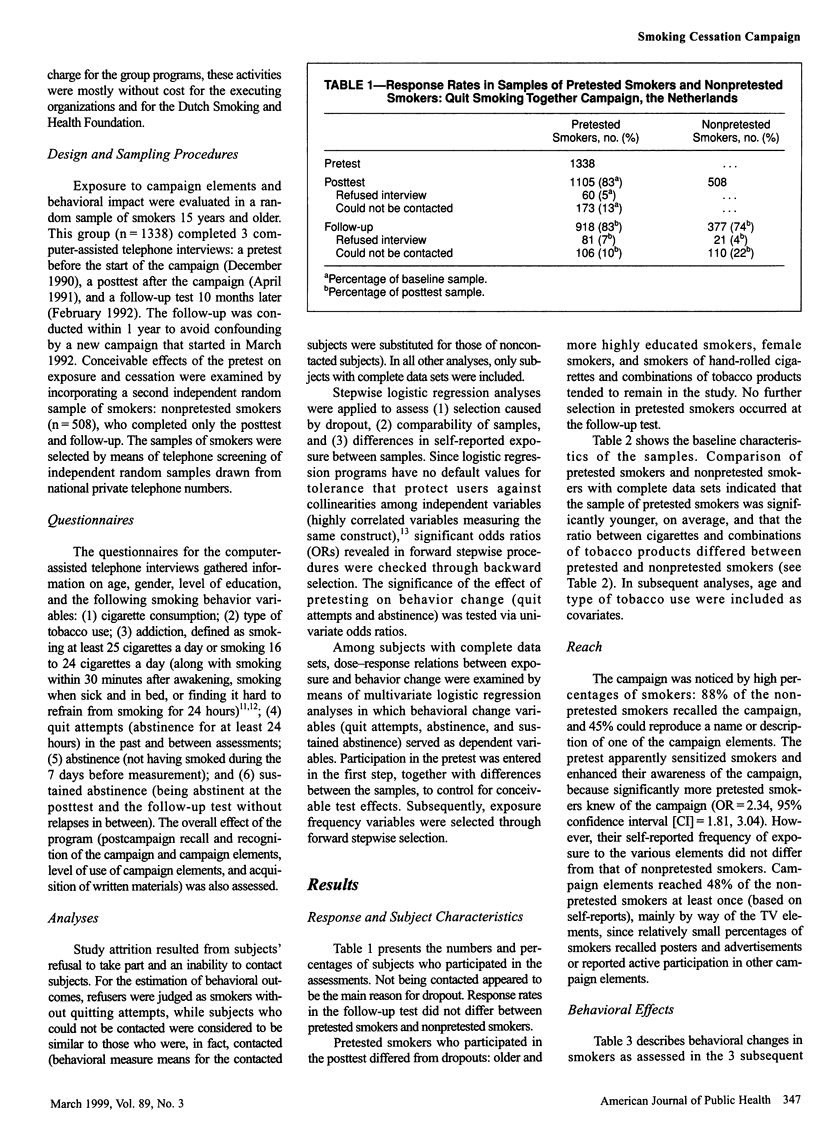
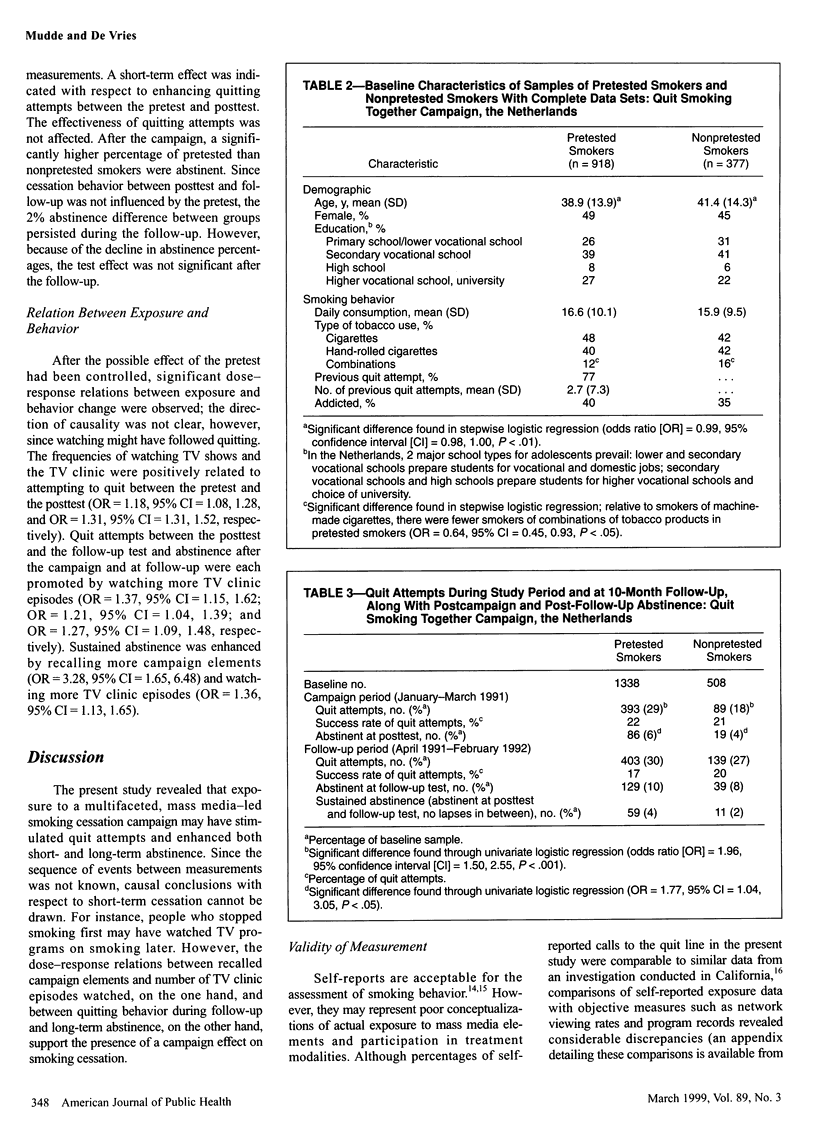
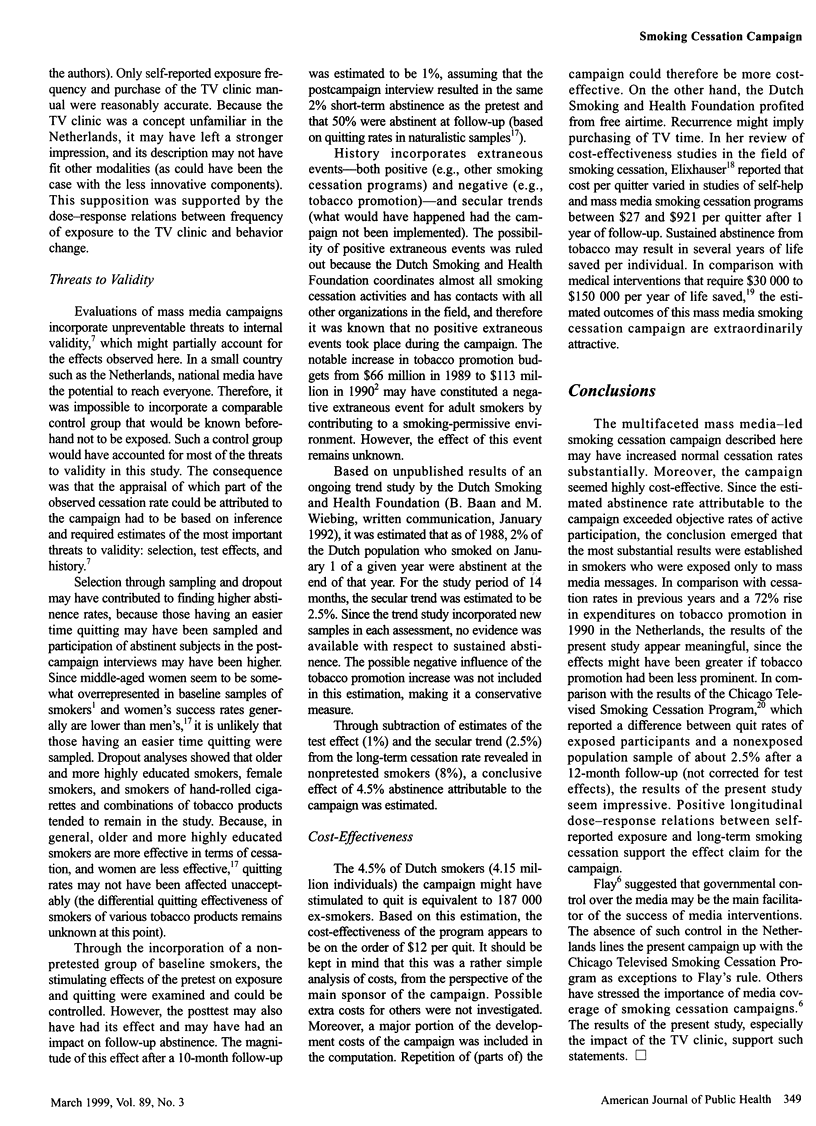
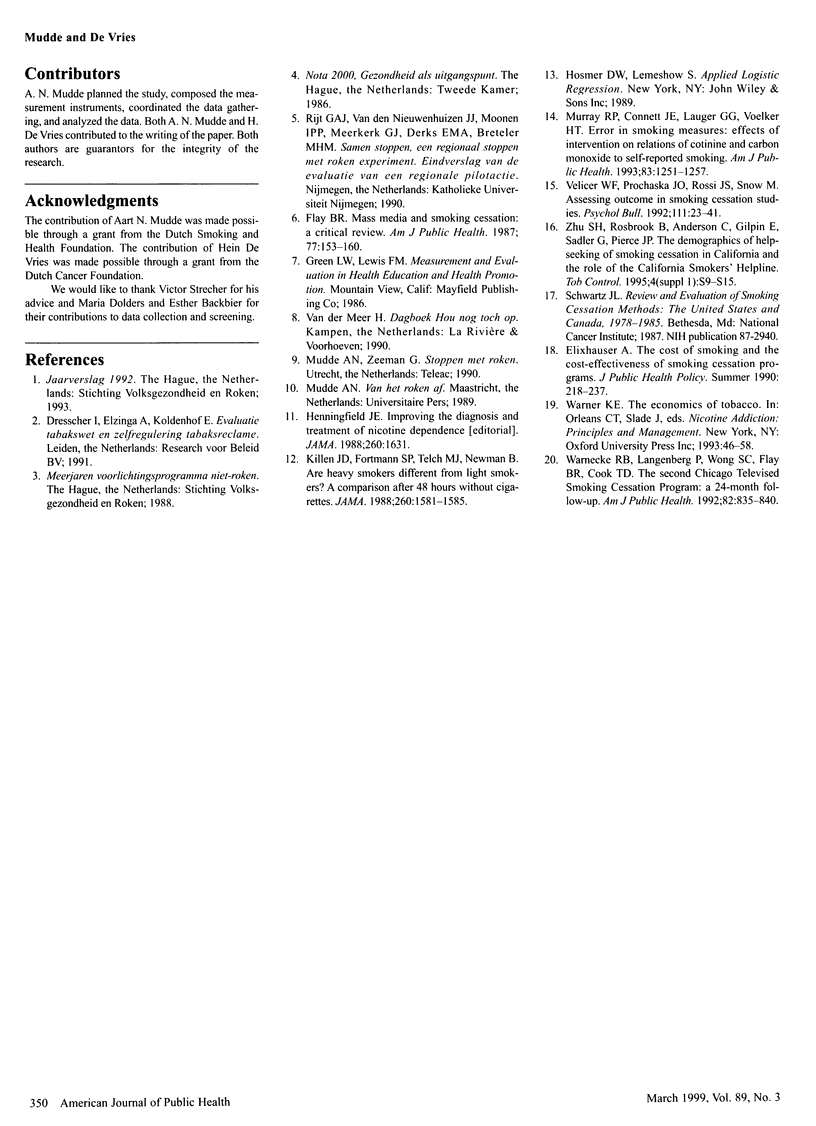
Selected References
These references are in PubMed. This may not be the complete list of references from this article.
- Elixhauser A. The costs of smoking and the cost effectiveness of smoking-cessation programs. J Public Health Policy. 1990 Summer;11(2):218–237. [PubMed] [Google Scholar]
- Flay B. R. Mass media and smoking cessation: a critical review. Am J Public Health. 1987 Feb;77(2):153–160. doi: 10.2105/ajph.77.2.153. [DOI] [PMC free article] [PubMed] [Google Scholar]
- Killen J. D., Fortmann S. P., Telch M. J., Newman B. Are heavy smokers different from light smokers? A comparison after 48 hours without cigarettes. JAMA. 1988 Sep 16;260(11):1581–1585. [PubMed] [Google Scholar]
- Murray R. P., Connett J. E., Lauger G. G., Voelker H. T. Error in smoking measures: effects of intervention on relations of cotinine and carbon monoxide to self-reported smoking. The Lung Health Study Research Group. Am J Public Health. 1993 Sep;83(9):1251–1257. doi: 10.2105/ajph.83.9.1251. [DOI] [PMC free article] [PubMed] [Google Scholar]
- Velicer W. F., Prochaska J. O., Rossi J. S., Snow M. G. Assessing outcome in smoking cessation studies. Psychol Bull. 1992 Jan;111(1):23–41. doi: 10.1037/0033-2909.111.1.23. [DOI] [PubMed] [Google Scholar]
- Warnecke R. B., Langenberg P., Wong S. C., Flay B. R., Cook T. D. The second Chicago televised smoking cessation program: a 24-month follow-up. Am J Public Health. 1992 Jun;82(6):835–840. doi: 10.2105/ajph.82.6.835. [DOI] [PMC free article] [PubMed] [Google Scholar]


